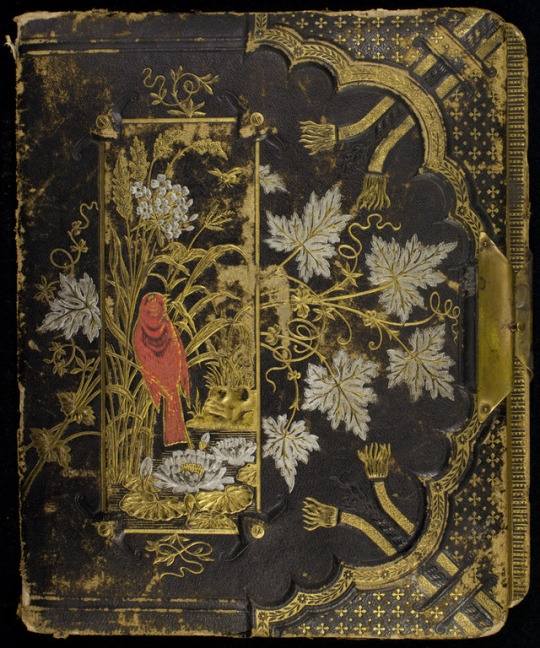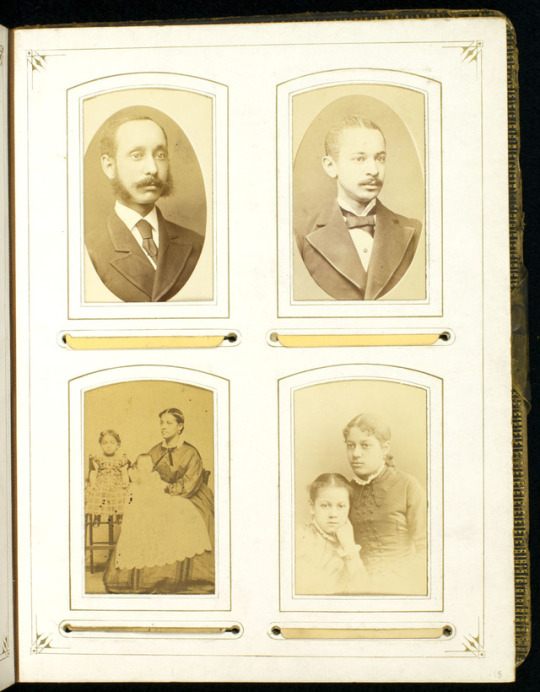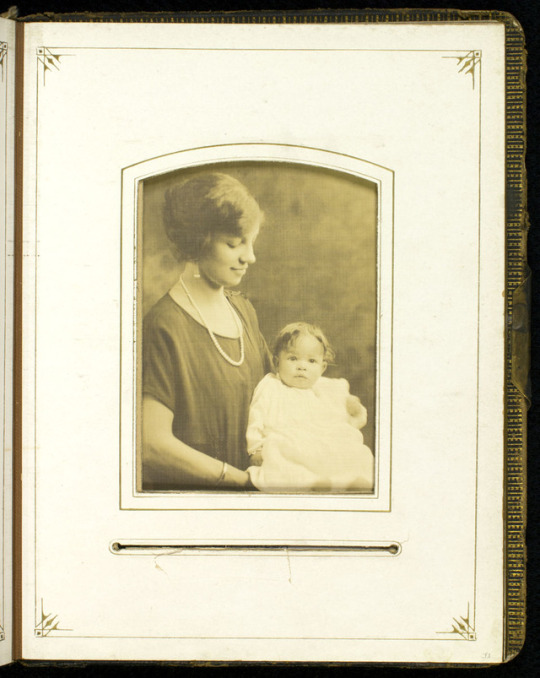#LCPPAAH
Photo

This summer, our Program in African American History Mellon Scholars Internship Program, funded by the Andrew W. Mellon Foundation, went virtual. Working largely with the collection at the Library Company, the five student-curators put together an online exhibition on the history of medical racism from Yellow Fever to Covid-19.
Click here to view "Déjà Vu, We’ve Been Here Before: Race, Health, and Epidemics."
To learn more about our Program in African American History visit https://librarycompany.org/academic-programs/paah/.
#lcppaah#MellonScholars#africanamericanhistory#blackHistory#MedicalHistory#YellowFever#Covid19#MedicalRacism
24 notes
·
View notes
Photo

On June 19, 1865, federal orders were read in Galveston, Texas emancipating all remaining enslaved persons in the confederacy. Though formally freed two years earlier by the emancipation proclamation of 1863, word didn't reach Texas due in part to its remote location, and by the lack of Union troops present to enforce the proclamation.
This image by artist Thomas Nast was originally published in "Harper's Weekly" on January 24, 1863 and depicts a series of scenes contrasting African American life before and after slavery.
Nast, Thomas. Emancipation: the past and the future. [graphic]. Philadelphia: Published by J. W. Umpehent, 607 Sansom Street, Printed in color by King & Baird, 607 Sansom Street, Philadelphia, 1865.
16 notes
·
View notes
Photo

Today is Juneteenth, the anniversary of the end of slavery. Although the Emancipation Proclamation was issued in 1862, slavery effectively continued until the end of the Civil War in 1865. To commemorate we wanted to highlight a group portrait of the first African American senator and representatives, which currently on display in our exhibition, From Negro Pasts to Afro-Futures: Black Creative Re-Imaginings.
Currier & Ives, The First Colored Senator and Representatives (New York, 1872). Lithograph.
These seven individuals embodied Black politics during the Reconstruction Era. While serving in their respective positions, these politicians advocated for public school education, universal suffrage, war amnesty, funding national infrastructure, labor rights, and civil rights.
#juneteenth#blackhistory#LCPafrofutures#LCPexhibits#1870s#LCPprints#LCPPAAH#AfricanAmericana#specialcollections#tumblarians
823 notes
·
View notes
Photo


Attributed to James F. Queen after Henry L. Stephens, “Free!,” “Make Way for Liberty!,” “The Lash.,” and “Blow for Blow” from Journey of a Slave from Plantation to the Battlefield (Philadelphia, 1863). Chromolithographic collecting cards.
Turning the Tables on the Overseer (New York, 1863). Wood engraving.
The depictions in “The Lash,” “Blow for Blow,” and “Make Way for Liberty” chromolithographic collecting cards and in the larger wood engraving present a stark contrast between the necessary violence perpetrated by the slave and the punitive and arbitrary violence of the white master.
From Negro Pasts to Afro-Futures : Black Creative Re-Imaginings on display now through October 18, 2019.
#LCPexhibits#LCPafrofutures#LCPPAAH#BlackHistory#AfricanAmericana#Slavery#1860s#turningthetide#specialcollections#tumblarians
228 notes
·
View notes
Photo

Arabic Fragment, a West African Gris-Gris, 1773.
A gris-gris or wanga is a traditional West African talisman consisting of transcribed prayers, roots, herbs, and other objects used to ward off evil. An enslaved Islamic priest wrote this snippet of Arabic calligraphy. It was written in Leyogan in colonial Saint-Domingue (now Ayiti/Haiti). Translation: “In the name of God, Most Gracious, Most Merciful Say: He is Allah, the One and Only! Allah, the Eternal, Absolute; He begetteth not nor is He begotten. And there is none like unto Him.”
From Negro Pasts to Afro-Futures : Black Creative Re-Imaginings is on display now through October 18, 2019.
#LCPafrofutures#LCPexhibits#BlackHistory#LCPPAAH#LCPmanuscripts#1770s#AfricanAmericanHistory#SpecialCollections#tumblarians
80 notes
·
View notes
Video
undefined
tumblr
Fan, late 19th century. Stevens-Cogdell/Sanders Venning Collection.
This fan is a keepsake from the Stevens-Cogdell/Sanders-Venning family papers. The whole collection documents the development of a prominent middle-class mixed race family in Philadelphia, Pennsylvania.
You can see this fan and more from the collection in the exhibition From Negro Pasts to Afro-Futures : Black Creative Re-Imaginings currently on display!
#LCPafrofutures#LCPexhibits#LCPmanuscripts#LCPPAAH#blackhistory#AfricanAmericana#19thcentury#philadelphia#specialcollections#tumblarians
89 notes
·
View notes
Photo

C. Shoosmith, “A Free Negress and Other Market-Women,” in James Henderson, A History of Brazil: Comprising Its Geography, Commerce, Colonization, Aboriginal Inhabitants, &c. &c. (London, 1821). Lithograph.
This image of Black Brazilian market women selling goods shows the importance of women entrepreneurs in the marketplace. Their presence demonstrated how savvy and creative Black businesses were in the 19th century.
From Negro Pasts to Afro-Futures : Black Creative Re-Imaginings is on display now through October 18, 2019.
#LCPafrofutures#LCPexhibits#LibraryGifs#BlackHistory#LCPPAAH#AfricanAmericana#LCPrarebooks#1820s#specialcollections#tumblarians
60 notes
·
View notes
Photo

John Sartain, Cinque: The Chief of the Amistad (Philadelphia, 1841). Mezzotint. Painted by Nathaniel Jocelyn; engraved by J. Sartain.
This engraving depicts Joseph Cinque, the leader of the Amistad uprising, standing against a lush African landscape. The toga and walking cane in his hand imbue Cinque and the scene with an air of stateliness and power that was unusual in contemporary depictions of Africans in the U.S. This allusion to a regal and empowered Cinque functions as a reclamation of the African Diaspora’s past and future
From Negro Pasts to Afro-Futures : Black Creative Re-Imaginings on display now through October 18, 2019.
76 notes
·
View notes
Photo



Album of Richard DeReef Venning (1865–1922). Stevens-Cogdell/Sanders-Venning Collection.
This photo album contains portraits of a prominent Philadelphia family, the Stevens-Cogdell/Sanders-Vennings, and other unidentified people. The family, which descended from Richard Cogdell (1787-1866) and the enslaved Sarah Martha Sanders (1815-1850), was actively involved in political, social, and cultural matters in the Philadelphian Black community.
Follow the title link to see the entire album.
From Negro Pasts to Afro-Futures : Black Creative Re-Imaginings is on display now through October 18, 2019.
#LCPafrofutures#LCPexhibits#19thcentury#photoalbums#LCPephemera#vcpatlcp#blackhistory#AfricanAmericana#LCPPAAH#specialcollections#tumblarians
42 notes
·
View notes
Photo

Charles Stearns, “Religious Dancing of the Blacks, Termed ‘Shouting’” from The Black Man of the South and the Rebels (New York, 1872).
This image was published post-Emancipation. However, by the antebellum era, after the Second Great Awakening, a great number of enslaved people converted to Protestant Christianity. The enslaved put their distinctive mark on worship and integrated enthusiastic religious practices with linkages to West Africa like polyrhythmic singing, “holy dancing,” and drums. Although the South banned the creation of Black-controlled churches, Black people found ways to worship privately with each other as a community act.
From Negro Pasts to Afro-Futures : Black Creative Re-Imaginings is on display now through October 18, 2019.
#LCPafrofutures#LCPexhibits#BlackHistory#AfricanAmericanHistory#lcppaah#AfricanAmericana#1870s#LCPrarebooks#specialcollections#tumblarians
33 notes
·
View notes
Photo

We’re #BugginOut! Each week this month we’ll be sharing all the bugs, insects, and various creeping critters we can find in our collection as part of the #BugginOut challenge hosted by Sutro Library.
This tiny, 7/8″ x 3/4″, decorative glass mosaic is from our Stevens-Cogdell / Sanders-Venning Collection, and depicts a beetle composed of gold, red, and green glass.
The Stevens-Cogdell / Sanders-Venning family was a middle-class African American family active in the Philadelphia political, social, educational, and cultural community from the 1850s to the 20th century. The family was involved in several prominent local African American institutions, including the St. Thomas P.E. Church, Church of the Crucifixion, Central Presbyterian Church, the Colored Institute of Youth, and the Citizens Republican Club.
Collection of objects from the Stevens - Cogdell - Sanders - Venning families.
#BensLibrary#BugginOut#LCPPAAH#LCPchallenge#LibraryChallenge#PrograminAfricanAmericanHistory#Tumblarians#Bug#Beetle#Mosaic
41 notes
·
View notes
Photo

This album belonging to Mary Anne Dickerson, a young middle-class African American Philadelphian, was probably created as a pedagogical instrument to promote cultivated expression, with contributions dating from 1833 until 1882 including this delicate floral watercolor painted by Sarah Mapps Douglass. Douglass, an artist and prominent Quaker member of the Philadelphia African American elite community, was best known as an educator and anti-slavery activist.
Douglass, S. M. (Sarah Mapps), 1806-1882 artist. Forget me not. S.M.D.
ca. 1843. Physical Description1 drawing: pen and ink, watercolor; overall 28 x 23 cm. (11 x 9 in.)
#HerNaturalHistory#lcppaah#AfricanAmericana#AfricanAmericanHistory#lcpprints#ephemera#19thcentury#VCPatLCP#specialcollections#Tumblarians#womenshistory
68 notes
·
View notes
Photo

S. Croad and John Hawksworth, “Sketch of the Vigilante” in Case of the Vigilante, a Ship Employed in the Slave-Trade (London, 1823).
This powerful and familiar image of a slave ship was published by the Committee of the Religious Society of Friends in London, which was committed to the abolition of slavery in England and Ireland. Notice the very scientific approach with which the ship’s anatomy is dissected and showcased.
This print is on display in the current exhibition: From Negro Pasts to Afro-Futures : Black Creative Re- Imaginings open through October 18, 2019.
#LCPexhibits#BlackHistory#Slavery#1820s#LCPrarebooks#LCPAfroFutures#LCPPAAH#specialcollections#tumblarians
14 notes
·
View notes
Photo




Black Migrations, a mini exhibition curated by our African American History Subject Specialist and Reference Librarian, Jasmine Smith, showcases the impact of World War I and the Great Migration and how it transformed black identity and black entrepreneurship. See these images and more on display now through March 29, 2019.
Pancoast, Charles R., b. 1858 photographer. [Canning and preserving at demonstration center at Little Wakefield, Germantown] C.R. Pancoast, Philadelphia, ca. 1918.
True blue. Chicago: E. G. Renesch, 1919.
Wilson, G. Mark (George Mark), d. 1925, photographer. 2nd and Brown St. A stevedore, a family. ca. 1923.
[African American worker at a work site near the Trenton Elevated Railroad Bridge in Philadelphia.] ca. 1918.
#BlackHistoryMonth#LCPPAAH#LCPexhibits#LCPinsiders#LCPprints#1910s#1920s#wwi#blackmigration#specialcollections#tumblarians
41 notes
·
View notes
Photo

From Negro Pasts to Afro-Futures: Black Creative Re-Imaginings. On display May 24 - October 18, 2019. Please join us for the opening reception on May 24 at 530pm!
The emergence of Afro-futurism as a relatively new construct in Africana Studies and Black History allows the Library Company of Philadelphia to pay homage to a black past and show how black historical artists envisioned a glorious black future. By displaying fragments of early Black Americans’ past from their drawings, love letters, poems, songs, speeches, and protests, this exhibition will help visitors grapple with the place of black creative genius in the quest for a people’s liberation.
Curated by: Jermaine Dennis, Kimani Magloire, Tamara Potts-Covan, Julian González, and Carolina Acosta
Dr. Deirdre Cooper Owens, Director of the Program in African American History.
Jasmine Smith, African Americana Specialist and Reference Librarian
#LCPexhibits#AfricanAmericana#LCPPAAH#AfricanAmericanHistory#BlackHistory#LCPevents#specialcollections#tumblarians#2010s
10 notes
·
View notes
Video
undefined
tumblr
Opening today!
From Negro Pasts to Afro-Futures: Black Creative Re-Imaginings
Stop by today, or join us tonight for the opening reception 530pm-7pm. Visit the following link for more info: https://librarycompany.org/portfolio-item/from-negro-pasts-to-afro-futures/
#LCPexhibits#LCPPAAH#blackhistory#africanamericanhistory#rarebooks#lcpprints#LCPevents#specialcollections#tumblarians
8 notes
·
View notes